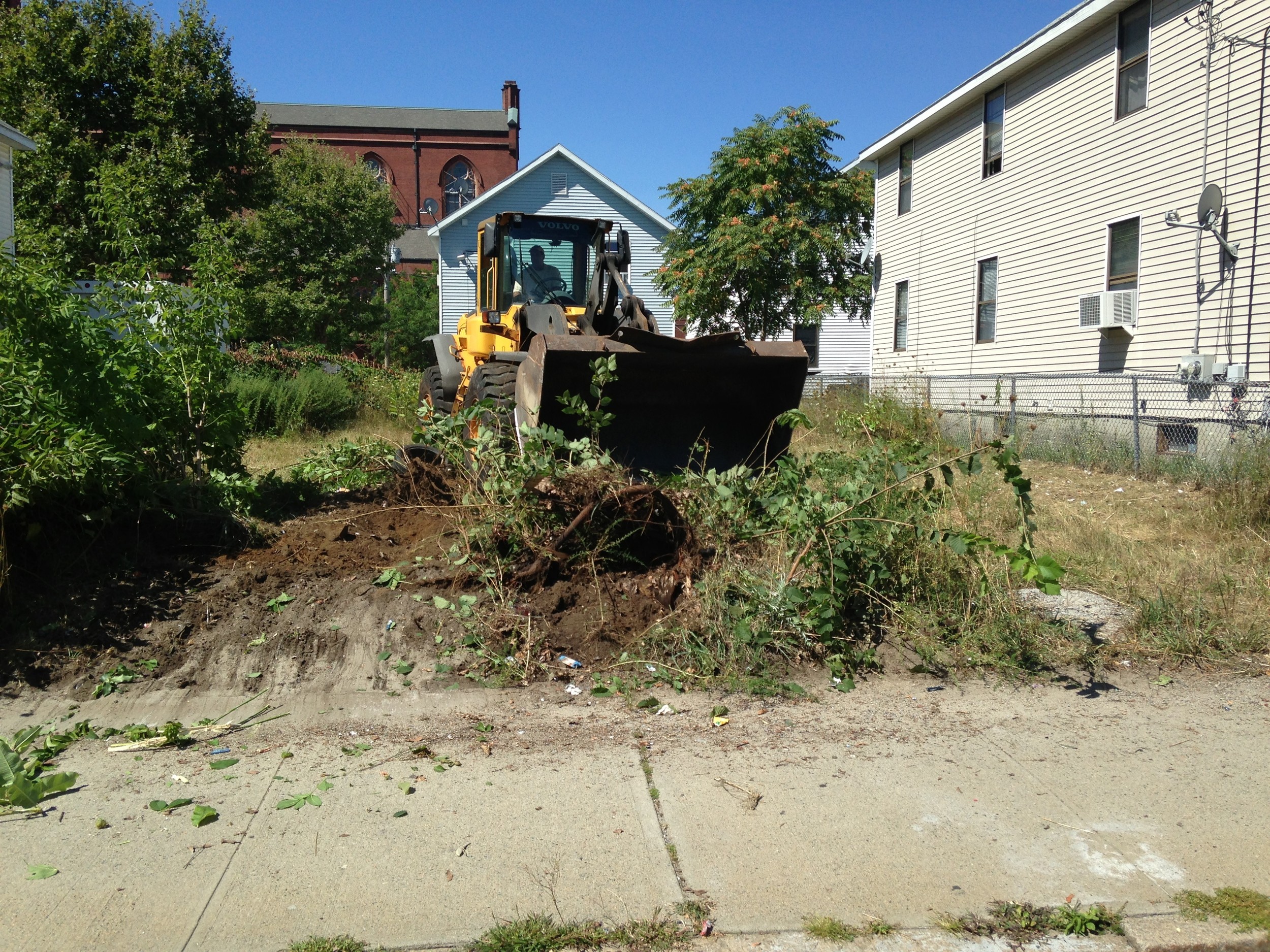Growing better health from the ground up, with Lots of Hope
A vacant lot is cleared to be the site of new urban greenhouse
PROVIDENCE – A rooster crowed, a dog barked, and curious neighbors gawked when a city front loader made quick work of clearing the vacant lot at 433 Prairie Avenue on the South Side, in preparation for the construction of a new urban greenhouse. A small crowd of dignitaries celebrating the occasion looked on with big smiles.
The greenhouse is the latest phase of the city’s sustainability efforts to turn vacant, city-owned property into productive urban farms and bring fresh produce to the neighborhoods, in an initiative known as Lots of Hope, in partnership with The Rhode Island Foundation.
The greenhouse will also serve as an urban oasis along the Walking School Bus pathway now under construction in the heart of South Providence, connecting with the Mary Fogarty Elementary School and the Robert Bailey Elementary School.
Construction of the greenhouse will begin in the fall on the 3,200-square-foot vacant lot, according to Office of Sustainability Director and Policy Director Sheila Dormody, who told ConvergenceRI that an RFP for the project would be issued shortly. The plan is to have the greenhouse ready to start growing its crops next spring, with low-cost leases available to urban farmers to support micro-business development and increase sources of locally grown food
The new greenhouse – along with three other Lots of Hope projects, including the Meader Street Farm and the Manton Bend Community Farm – will help the city achieve its goal as part of the latest school food service contract that calls for 15 percent of the Providence School Department’s food purchases to be locally sourced.
The Lots of Hope initiative is also linked to Providence COMPOSTS! composting pilot program, which in its first year diverted 2.3 tons from the waste stream.
Providence Mayor Angel Tavares was joined by City Council President Michael Solomon, who championed the creation of the city’s Office of Sustainability; Ward 10 Councilman Luis Aponte, Providence School Superintendent Susan Lusi, Daniel Kertzer, vice president at the Rhode Island Foundation, and Julie Casimiro from Family Service of Rhode Island.
Taveras, who noted that you could see his old elementary school, Mary Fogarty, from the former vacant lot, said he was excited that the greenhouse would also serve as an educational opportunity for the city’s school kids. “It will become a learning laboratory for our schools,” he said.
Aponte thanked everyone whom he said “had been toiling in the fields for a long time” to make this project a reality in South Providence. He singled out Mr. Carter and his family, whom he described as “a South Side staple.” Aponte praised Carter’s resolve, saying he was “someone who had been advocating for years that we needed to reclaim these problem lots and reconnect our community to the earth, reconnect our kids to the earth, so that we understand our connectedness.”
Solomon thanked the members of the public-private partnership that made the initiative possible.
Kertzer talked about Rhode Island Foundation’s efforts as an investment “in the big picture,” promoting local agriculture.”
“I can’t think of a project that’s more aptly named than Lots of Hope,” he said.






